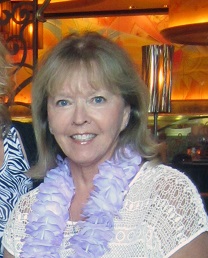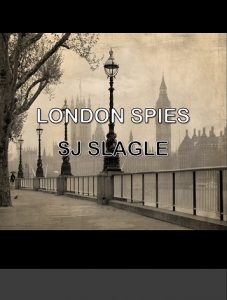Blowing Up Your Point Of View
 POV. Point of view.
POV. Point of view.
I started paying closer attention to point of view when I read a few reviews criticizing master romance writer, Nora Roberts, for mixing her POVs. “Shameful,” said one reviewer. “Incredible,” wrote another. How could she? Didn’t she know any better? All because Nora had the audacity to write this:
“He needed, craved, the touch, the taste. Now. All of her, all his.
Now those stars exploded, blinding her. She couldn’t get her breath as sensations pummeled her.”
The flack flung Nora’s way was because she began a chapter in the perspective of one character and, in the midst of an intense scene, nonchalantly finished the chapter in the perspective of a second character. With a small smirk, I noted that changing perspectives wherever and whenever she felt like it had not hurt Nora Roberts’ books sales one teensy bit.
Curiosity piqued now, I conducted a small survey of well-known writers over the past few decades on their particular use of POV.
The writings of Dashiell Hammett, a hard-boiled detective writer in the 1930s and 40s, were not earthshaking when it came to perspective. He kept religiously to third person past tense.
“Spade sank into his swivel chair, made a quarter turn to face her, smiled politely.”
Ditto for western and crime writer, Elmore Leonard. He wrote for decades in third person selling not only books but movies as well. Hombre and Get Shorty were two of his best.
But mystery writer, Sue Grafton, decided to mix things up back in 1982 when the reader learned her stories through the first person perspective of sassy Kinsey Millhone, a wonderful female protagonist written by a wonderful woman writer. (Note the excitement for my gender?) Sue wrote:
“My name is Kinsey Millone. I’m a private investigator, licensed by the state of California. I’m thirty-two years old, twice divorced, no kids. The day before yesterday I killed someone and the fact weighs heavily on my mind.”
Grafton not only switched voice, from third to first person, but she changed from present tense to past in the same paragraph. Changing tenses wasn’t done successfully until then either.
J.A. Jance, another successful mystery writer, grew even bolder in the 2000s. In “Dance of the Bones”, she wrote all the main characters’ viewpoints in third person past tense except for J.P. Beaumont, one of her major protagonists. We learned J.P.’s contribution through the all-important first person. When Beaumont spoke, we paid more attention. His small but mighty input not only furthered the story but helped in its resolution.
“Excitement bubbled in Brandon Walker’s voice and in mine as well. We were a pair of old hounds who had just caught a scent. It was a very faint scent and one that might not pan out, but it was still here, and we were on it.”
But no writer strayed into the POV red zone: writing in first person, present tense until the blockbuster novel Fifty Shades of Grey became a literary phenomenon. Say what you will about her book, E.L. James managed to pull off nothing short of a coup when she wrote her trilogy in first person, present.
Unbelievable! Critics cried her books were trash and so poorly written. Maybe so but they made publishing history and blew up forever some antiquated notions of writing.
“His long index finger presses the button summoning the elevator and we stand waiting—awkwardly on my part, coolly self-possessed on his.”
I feel like I’m in the elevator with Christian and Anastasia, don’t you?
That was the point of the author’s point of view.
Everything in the world has changed in the last hundred years and it’s fine that styles of writing have evolved as well. The detached third person point of view has slowly made way for the more involved first person POV to join it center stage. As authors, it’s wonderful to have more choice. As a mystery and romance writer, I am thrilled to be able to experiment with my writing.
Here’s a toast to blowing up your POV!
—
 Jeanne Harrell is a bestselling author of nineteen novels of western and contemporary romance stories set in the Wild West. Her Westerns, emotional and compelling stories, have sold all over the world and include the Rancher Series, The Westerners Series, Avila Beach Winery Series and These Nevada Boys series. She was born in Illinois and lived in Arizona for many years. She received degrees in Florida and California, and taught English literature for most of her adult career. Jeanne also writes mysteries as SJ Slagle and has written five mysteries including LONDON SPIES, an historical fiction novel set in WWII.
Jeanne Harrell is a bestselling author of nineteen novels of western and contemporary romance stories set in the Wild West. Her Westerns, emotional and compelling stories, have sold all over the world and include the Rancher Series, The Westerners Series, Avila Beach Winery Series and These Nevada Boys series. She was born in Illinois and lived in Arizona for many years. She received degrees in Florida and California, and taught English literature for most of her adult career. Jeanne also writes mysteries as SJ Slagle and has written five mysteries including LONDON SPIES, an historical fiction novel set in WWII.
To find out more about Jeanne and her books, visit her website at www.jeanneharrell.com.
Category: Contemporary Women Writers, How To and Tips


























Thank you for this!